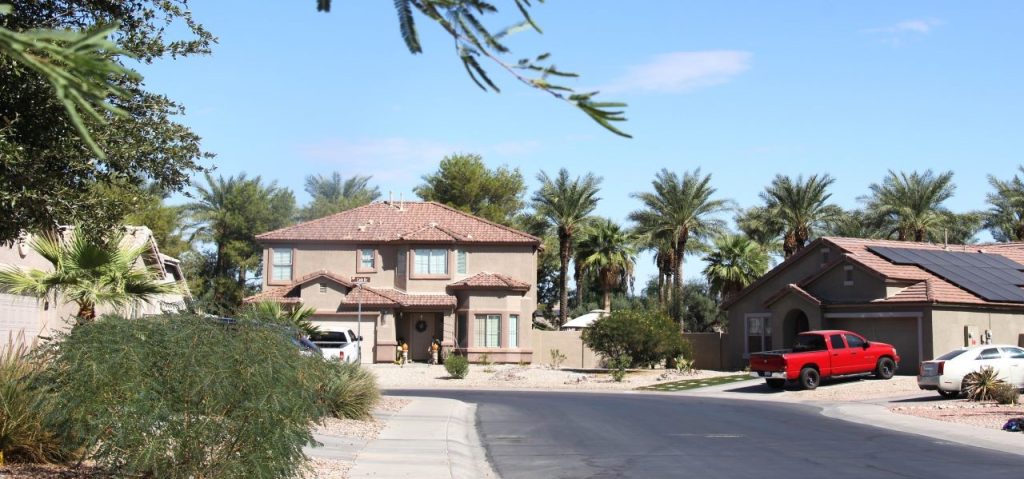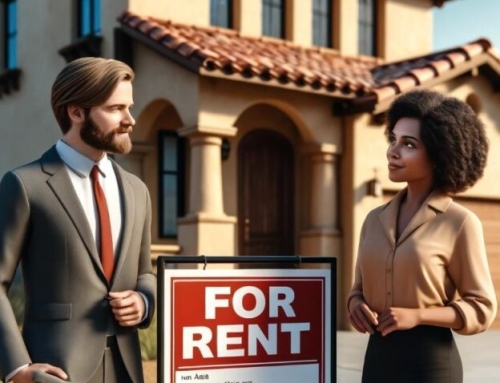How to Find the Right Neighborhood That Works for Your Lifestyle
If you’re moving across town or across the country, you may not be as familiar with the local neighborhoods as you would like before committing hundreds of thousands of dollars to buy a home there. But the neighborhood is at least as important as the city.
Here is a checklist of things to consider and discover.
Where Are the Best Shool Districts
Great nearby schools are important not only for families with kids but for resale or rental value. I had a rental in the highly regarded Kyrene School District, and all I had to do to market a vacancy was put a Home Depot for rent sign in the front yard. Renters came to the door.
You’ll find district report cards on the Arizona Department of Education’s school report card system.
Their letter grades are here:
Other entities that grade schools include:
U.S. News – Best Arizona Elementary Schools
Commute to Jobs and Where You Often Go
During the housing boom, the slogan for wanna-be homebuyers was “drive until you qualify.” The cheaper homes were in the exburbs, like Maricopa and Buckeye (although the metro has grown much closer since then). But most of us don’t want to spend an hour or more in a car every day going to work. So, it’s wise to at least determine the commute and then see if you can live with it.
I would recommend doing so at the same time as what would be your drive to work, and in both directions. You can also get some idea by looking at Google maps. Valley Metro also has a trip planner site that offers commute times from points A to B.
Don’t fail to consider this, as you’ll have lots of time for regrets while sitting behind the wheel.
Cool stores and places
Do you want to be near a Costco or Sprouts? Is having a choice of sushi around you important? Where’s the nearest park, movie theater, nightlife, recreation, grocery store, dog park, funky downtown, neighborhood tavern, your gym … or whatever amenity ranks high for you and your family?
The best way to find out is drive the few square miles around the prospective neighborhood and see for yourself.
Look for nearby amenities such as grocery stores, hospitals, parks, and recreational facilities. Websites like Yelp, Google Maps, and community forums can offer insights into what’s available in the area.
You can also search for what you would like to have near you by searching for “Home Depot near Chandler” (for example). In one of our moves, we went from a neighborhood with lots of pocket parks and a couple of big ones to a neighborhood where that was a drive. Should have looked. Don’t you make that mistake.
Neighborhood Crime and safety
Nothing is more important to you and your family than staying safe. You don’t want to live in a place where crime is rampant. You want the safest neighborhood you can afford.
Before putting your hard-earned money down on a home, find out how much crime is in the area. The local police department keeps those figures, sometimes down to the block. Some departments make it easier to navigate the system, but even with the more difficult ones, if you keep at it, you’ll turn up valuable information.
Most local police agencies have these stats and present them on their websites, often in maps. So just Google the city and crime statistics and you’re likely to find it. Here, for example, is Phoenix Current Crime Maps and Statistics.
That works for most cities. Here’s the Chandler Police Department Community Crime Map.
There also are private sites that help, like CrimeGrade.org.
Community and Lifestyle
During the significant population growth periods in Arizona, particularly in the metro areas, master-planned communities with homeowner associations have been the norm. Often those feature recreation and social amenities you might find attractive (or not). They can include pools, sport courts, parks, community space, lakes, events, and more. Our HOA, for example, puts up flags on patriotic holidays and has an Easter egg hunt for the kids in a small park. Some have big founder’s festivals and other fun gatherings.
Those neighborhoods in large and well-marketed developments, like Verrado in Buckeye, have robust websites where you can explore amenities and the general culture of the area. Others require you to drive through it several times to get your own feel for the place. (I’d recommend late afternoon when schools get out, the weekend, and during dark hours.
If this is really important, go to a local grocery store on a weekend and talk to people, including the employees. You might also chat up the neighbors of a house you’re considering.
Sites like Next Door offer glimpses of life in a neighborhood, but many require you to sign up and give them your personal information to access.
Homeowners Association
If you are buying in an HOA, the seller is required to give you a copy of the HOA rules and bylaws. Don’t wait until you close to read that; they might prohibit something you consider necessary, like the ability to park a work vehicle at your home or a boat sticking up over a fence. Those rules are designed to keep the neighborhood clean and uniform, so they do protect your property values. But know what you’re getting into.
You often can get much info on the HOA site (although some of them a meager).
Environmental Issues
You are supposed to be notified of any environmental issues that could affect you home or neighborhood, like pollution clean-up sites, airport noise, and flooding issues. Look for those notices in the report sellers must provide buyers, generally called seller’s property disclosures or similar language.
You also can check the local city’s site, the Arizona Department of Environmental Quality, which has a My Communities section. (ADEQ) and the Federal Emergency Management Agency (FEMA) websites can provide information on these factors.
Local Government and Community Websites
These websites in Arizona often provide information on zoning, planning, and community services, and they are easy to find. School district websites often have community information as well.
Also look for the community’s site for visitors, which describes amenities and things to do. These generally pair the name of the city with “Experience,” “Visit,” “Explore.” Scottsdale’s, for example, is ExperienceScottsdale.com and Goodyear is VisitGoodyear.com. These are great sources.
Social Media and Community Forums
Go to Facebook and look for groups with your prospective city names in it (NOT the buy or sell groups). That will connect you to people who live there and tell the world about what they like and don’t like. Same goes for other social media platforms, like Reddit and Nextdoor.
Local Newspaper and News Websites
These used to be the go-to source for local news (for good or ill) and events, and Arizona has plenty of them. Some have pay walls but not all. Even those with paywalls sometimes have a roundup feature that can give one a feel for the place. Or consider subscribing, if only temporarily. Most have online versions.
*******
When your are buying or selling real estate, you have no lack of informational and transactional considerations to contemplate and study. But don’t forget to check out the neighborhood. If there is something you love or hate, it’s best to know that before finalizing.
By Hal DeKeyser
(Research but not writing aided by AI)
The post How to Find the Right Neighborhood That Works for Your Lifestyle first appeared on Arizona Realty Network.
Related Posts

Contact Form
















